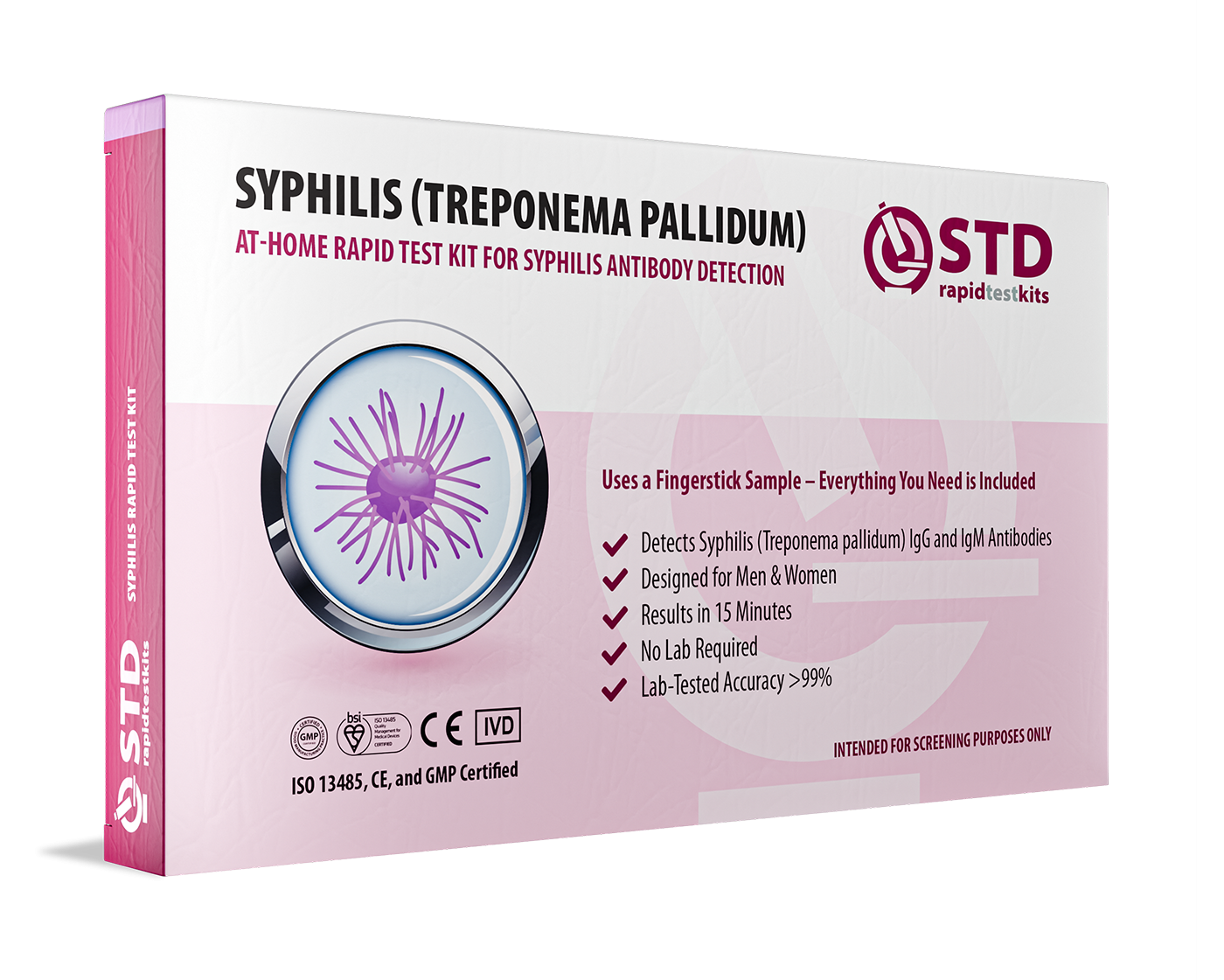Quick Answer: California’s congenital syphilis crisis is rising in both rural and urban areas, driven by gaps in prenatal screening, poverty, and stigma. Early, repeated testing, even at home, can prevent most cases.
In the dim corner of a Fresno maternity ward, Marisol cradled her newborn, tracing tiny fingers she’d waited nine months to hold. The baby’s cheeks were flushed, a faint rash spreading along his jawline. “Probably heat,” a nurse suggested. But within hours, a pediatric infectious disease specialist was called. Bloodwork confirmed what Marisol had never imagined possible, congenital syphilis. She had tested negative during her first prenatal visit. No one had told her to test again before birth.
Stories like hers are multiplying in California, in both small towns and major cities. State health data shows the number of babies born with syphilis has surged by nearly 400% in less than a decade, and it’s no longer confined to rural regions. From Los Angeles to Stockton, congenital syphilis is finding footholds wherever healthcare gaps, stigma, and systemic inequities allow it to thrive.

People are also reading: What Genital Sores Can Tell You About Your Health
When a Rash Means More Than Heat
The earliest symptoms in newborns can be heartbreakingly easy to miss. A faint rash on the palms or soles. Slight swelling of the liver or spleen. Persistent nasal discharge that parents mistake for a cold. In some cases, there are no symptoms at all, until irreversible damage begins. According to the CDC, congenital syphilis can lead to stillbirth, bone deformities, neurological damage, and lifelong disability if untreated. In California, state surveillance reports confirm that over 60% of local health jurisdictions saw at least one case last year.
It’s a cruel irony, syphilis is both highly preventable and, in its earliest stages, highly invisible. That’s why symptom awareness matters. A single missed screening, especially in the second or third trimester, can mean the difference between a healthy newborn and a life altered before it begins.
Shattering the ‘Rural Only’ Myth
For years, congenital syphilis in California was framed as a problem of the state’s most remote, agricultural counties. That framing is no longer true. A UC Davis study examining cases between 2019 and 2020 found that small-to-medium metropolitan areas had some of the highest rates, driven by concentrated poverty, limited prenatal care, and lack of insurance coverage. Kern County, San Joaquin County, and Fresno County, regions that blend urban centers with sprawling farmland, reported incidence rates over 200 per 100,000 live births, far above the state average.
Even major metropolitan areas aren’t spared. Los Angeles County’s own public health data shows 126 congenital syphilis cases in 2023, translating to a rate of 148 per 100,000 births, higher than some rural counties. The pathogen doesn’t check zip codes. It follows the same path as all public health inequities: toward communities where barriers to care are steepest and stigma runs deepest.
Check Your STD Status in Minutes
Test at Home with RemediumSyphilis Test Kit

 For Men & Women
For Men & Women Results in Minutes
Results in Minutes No Lab Needed
No Lab Needed Private & Discreet
Private & DiscreetOrder Now $33.99 $49.00
The Anatomy of a Crisis
Congenital syphilis happens when untreated syphilis in a pregnant person passes to the fetus through the placenta. The bacteria, Treponema pallidum, can infect a baby at any stage of pregnancy. In California, a complex storm of factors is fueling the surge: economic hardship, unstable housing, substance use, underfunded clinics, and medical mistrust. In Kern County, for example, researchers documented how women juggling homelessness, addiction recovery, and transportation gaps often missed follow-up prenatal visits. Others avoided care altogether out of fear of being judged, reported, or shamed.
Yet the tragedy is that congenital syphilis is almost entirely preventable with timely screening and treatment. The antibiotic penicillin, still the gold standard, can cure syphilis at any stage in pregnancy and dramatically reduce the risk to the baby. The real problem isn’t the bacteria. It’s the system that lets it reach the delivery room.
That’s why prevention efforts are shifting toward more frequent testing, including at-home rapid testing that can be done discreetly between clinic visits.
“I Didn’t Cheat. I Still Gave Birth to a Baby with Syphilis.”
Tanya remembers the moment the delivery nurse wouldn’t meet her eyes. Her son, born three weeks early, had tested positive for syphilis. She’d been in a stable relationship for years.
“I thought syphilis was something from the past, something people only got if they’d been sleeping around,” she told me. “When I asked my partner, he said he had no idea. We both felt betrayed, but not by each other, by the idea that we could be blindsided like this.”
Her story is a mirror for many others. Congenital syphilis doesn’t require infidelity, promiscuity, or a “risky lifestyle.” The World Health Organization notes that untreated syphilis can remain in the body for years without obvious symptoms, and can be passed from one pregnancy to the next if not detected. That means someone could have been infected long before their current relationship, and never know.
Busting the Myths That Keep People from Testing
The most dangerous myths about syphilis in pregnancy aren’t medical, they’re emotional. They keep people from seeking care or telling partners. One of the most persistent is that syphilis only affects people who are “irresponsible.” In reality, the bacteria doesn’t discriminate. You can contract it from a single sexual encounter, from a partner infected years ago, or even during periods of sexual inactivity if an old infection was never treated. Another myth is that a single prenatal screen is enough. While the CDC recommends testing at the first prenatal visit, California public health experts now urge repeat testing in the third trimester and again at delivery in high-prevalence areas.
Yet stigma and misunderstanding stop this from happening. In some clinics, staff avoid talking about STIs in depth for fear of embarrassing patients. In others, patients avoid follow-up appointments out of fear of judgment. The cost of those silences is measured in the tiny bodies of newborns fighting an infection they should never have had.

People are also reading: She Gave Me Her Heart… and Herpes
The Numbers That Should End the Debate
Between 2014 and 2023, California’s congenital syphilis cases jumped from 104 to 514, an increase of nearly 394%. The BMC Infectious Diseases journal reports that structural barriers like transportation, clinic shortages, and fragmented insurance coverage leave pregnant patients without easy paths to care. This isn’t a problem of personal morality, it’s a predictable outcome of policy neglect.
In Fresno County alone, health officials recorded a rate of 297 cases per 100,000 live births in some communities, nearly triple the state’s average. And in Los Angeles County, where prenatal care is more accessible, 126 babies were still born with syphilis last year. Urban, rural, suburban, this bacteria thrives wherever human connection meets system failure.
Sex Positivity as a Public Health Tool
The fight against congenital syphilis isn’t about shaming people into abstinence, it’s about creating a culture where sexual health is treated as a normal, essential part of life. That means conversations between partners about testing. It means healthcare providers asking about sexual history without assumptions. And it means access to tools, like discreet at-home syphilis test kits, that empower people to check their status without waiting for a clinic appointment.
When sex is treated as shameful, people hide. When it’s treated as a normal, healthy part of life, people talk, test, and protect themselves. That cultural shift is just as important as antibiotics in stopping this disease from reaching the next generation.
Micro Scene: The At-Home Test That Changed a Birth Story
Two weeks before her due date, Leah sat at her kitchen table with a white envelope. Inside was an at-home syphilis test she’d ordered online. Her clinic had tested her in the first trimester and told her she was clear. But something, an article shared by a friend, a nagging anxiety, pushed her to check again. The faint positive line stopped her breath. Her OB treated her within 24 hours, and her baby was born healthy. Without that test, she might have been one more statistic in the state’s growing crisis.
Check Your STD Status in Minutes
Test at Home with Remedium3-in-1 STD Test Kit

 For Men & Women
For Men & Women Results in Minutes
Results in Minutes No Lab Needed
No Lab Needed Private & Discreet
Private & DiscreetOrder Now $69.00 $147.00
For all 3 tests
Why One Test Is Not Enough
If you ask most pregnant people when they were last screened for syphilis, the answer will be “at my first prenatal visit.” That’s because, for decades, the standard protocol in most of the U.S. was to screen once, early on. But in high-prevalence areas like parts of California, that’s like locking your door once and leaving it open the rest of the night. Infections can occur any time during pregnancy, and untreated late-pregnancy syphilis can still pass to the baby.
The California Department of Public Health now urges repeat screenings at 28 weeks and again at delivery for anyone in a high-risk county. This isn’t about labeling certain women as “reckless.” It’s about acknowledging the reality: syphilis rates are climbing, partners can be unknowingly infected, and a single negative test in the first trimester is no guarantee at birth.
Imagine if Marisol from Fresno had been offered a second test in her third trimester, or if Tanya’s clinic had mentioned at-home testing as a backup. Their babies’ first days might have been spent bonding, not in neonatal intensive care units hooked to IV antibiotics.
The Role of At-Home Testing in Closing Gaps
Clinics and hospitals are the backbone of public health, but they aren’t always enough. Between work schedules, childcare demands, lack of transportation, and clinic wait times, it’s easy to see why people skip follow-up visits. That’s where at-home syphilis tests come in. These kits, designed to detect antibodies in a small drop of blood, can be self-administered in minutes. They don’t replace medical care, but they can be a crucial safety net, especially for those in counties where the nearest OB is hours away.
When public health experts talk about “layered prevention,” this is what they mean: prenatal screenings, at-home checks between visits, partner testing, and prompt treatment when needed. It’s the same logic as wearing both a seatbelt and having airbags, redundancy saves lives.
System Failures, Personal Costs
The BMC Infectious Diseases study on Kern County revealed something chilling: many of the women who gave birth to babies with congenital syphilis had tried to get care, but the system slowed them down. One woman described waiting weeks for a clinic appointment, only to have it canceled. Another was tested once but never called back for a follow-up when her results were lost in the system. In some cases, the barrier was more subtle, staff who made judgmental comments about drug use or relationship status, driving patients away before they could be treated.
Every delay, every dismissive remark, every missing reminder call has a human cost measured in NICU admissions, long-term disabilities, and funerals for infants who never took a breath.

People are also reading: Chlamydia and Gonorrhea: How Are They Different?
Normalizing the Conversation
If we want to stop congenital syphilis from growing in California’s cities and towns, we have to change how we talk about sexual health in pregnancy. That means OB offices putting STI testing posters in waiting rooms without euphemisms. It means prenatal educators talking openly about repeat testing. And it means friends, sisters, and partners encouraging each other to test, without attaching shame to the act.
Think of it like gestational diabetes screening. No one assumes a woman’s moral failings if she needs that glucose test twice. The same should be true for syphilis screening. It’s a medical check, not a character assessment.
The Partner Who Said Yes
Andre wasn’t sure why his girlfriend asked him to take an at-home syphilis test. “We’ve been together for years,” he said. But when she explained that her OB recommended repeat testing in pregnancy, he agreed. His result came back positive. Shocked, he called his own doctor and traced the infection back to a brief relationship years earlier. “If she hadn’t asked, I would never have known,” he told me. He got treated the same week, and their baby was born infection-free. Sometimes prevention starts with one awkward question and one honest answer.
FAQs
1. Is it possible to treat congenital syphilis after birth?
Yes, antibiotics can help babies with congenital syphilis, but they need to be treated right away to avoid permanent damage.
2. Should I get tested for syphilis again if I tested negative early in my pregnancy?
Yes, repeat testing later in pregnancy is a good idea in places where the disease is common, like many parts of California.
3. Is it possible to get syphilis without cheating?
Yes, you can get infections years before they show up, so your current partner may not have been cheating.
4. What are the first signs in babies?
Rashes on the palms and soles, runny nose, fever, or no symptoms at all until later problems come up.
5. How reliable are syphilis tests done at home?
Many FDA-approved home tests are very good at finding antibodies, but a healthcare provider should check the results.
6. Is congenital syphilis common in cities?
Yes, new data shows that both urban and rural areas of California have high rates.
7. Is it possible to get syphilis from kissing?
Direct contact with a sore, which can happen on the lips or mouth, can spread syphilis, but this is less common than sexual contact.
8. Why is syphilis on the rise now?
Some of the factors are less money for public health, closed clinics, and adults who don't get treatment for their infections.
9. Is it safe to test while pregnant?
Yes, syphilis tests are safe, quick, and necessary to keep the baby healthy.
10. What if I test positive at home?
Get in touch with a healthcare provider right away for more tests and treatment.
Don't Wait and Wonder.
California’s congenital syphilis crisis isn’t just a rural issue, or an urban one, it’s a statewide alarm bell about how we handle sexual health in pregnancy. The bacteria itself hasn’t grown stronger. What’s changed is the social landscape: widening income inequality, clinic closures, underfunded public health programs, and lingering stigma that makes people think syphilis is someone else’s problem. It isn’t. It’s all of ours.
But the good news is that congenital syphilis is one of the most preventable public health tragedies we face. It takes awareness, repeated testing, partner involvement, and systems willing to meet people where they are, whether that’s a county clinic, a telehealth appointment, or their own kitchen table with an at-home test kit.
Don’t wait for symptoms. Don’t assume one test is enough. Protecting your baby starts with protecting yourself. Don’t wait and wonder, get the clarity you deserve.
Sources
1. Association of Congenital Syphilis With Socioeconomic Factors in Small/Medium California Counties
2. Barriers to Congenital Syphilis Prevention in Kern County










